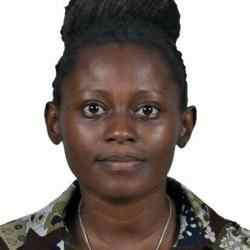Introduction
Minhaj Chowdhury has created a new adaptive system of providing access to clean groundwater to rural communities where water contamination is a critical public health issue. Embedding a commercial micro-enterprise model, he has developed a cost effective, sustainable, modular water filtration system.
The New Idea
Recognizing the need for a sustainable and scalable model, Minhaj Chowdhury has developed a practical solution to address the critical issue of water contamination. Seizing the opportunity, provided as a result of two-decades of failed interventions by both the public and private sectors, Minhaj has brought a multi-stakeholder engagement approach in his model to provide a cost effective solution. His adaptive model provides an end-to-end water filtration solution, endorsed by public and local authorities, and managed by locally selected micro-franchises/entrepreneurs from within the communities.
Minhaj’s approach of “Select, Build, Sell, Service” with the ownership of individual entrepreneurs is proving to be an effective one. Decentralization of the management and operations of these facilities provide a perfect recipe for scalability. The involvement of local communities in the planning process, legitimizes, and removes emotive issues of a commercial model. To ensure that the heavy operating and capital expenditure is managed efficiently, primary reason why other models have failed, Minhaj has developed different ways to ensure that the cost of clean water does not remain out of reach among the marginal communities. For example in West Bengal of India, Minhaj has partnered with the Government to completely subsidize the capital and operating expenditure of the water plants.
Considering the different levels and type of water contamination, in addition to the constant landscape changes, Minhaj has consciously created a model that is adaptive. In addition to their own in-house low cost filtration technology that uses locally sourced materials, he also works with third party vendors to ensure that the filters applied in these pumps are able to meet the water condition.
The Problem
Approximately 70.2% of Bangladesh’s 160 million people live in rural areas. Approximately 200 million people in the world are vulnerable to arsenic, fluoride and iron contaminated water, with about 48 million alone in Bangladesh and India. This is one of the largest causes of mass poisoning in the history. Sources of water is namely surface water, ground water, and rain water, where both ground and rain providing drinking water in their most natural condition. Groundwater providing the cheapest and convenient source, in Bangladesh, currently there are 8.6 million tubewells providing 90% of Bangladesh’s water supply. In recent years, about 4.7 million tubewells are tested to be arsenic contaminated. To-date about 4000 people have been identified to be suffering from chronic arsenicosis, with further 13 million are estimated to contain arsenicosis and fluorosis. This translates to about $22.89 billion in lost GDP.
Since arsenic was first traced in Bangladesh in 1993, there have been multiple intervention models from the Government, International Donor/Development Agencies, and most recently the private sector. Minhaj insists that while many filtration technologies and innovations are available, the failure to provide an effective and practical solution has been largely due to solving the issue of capital and operating expenditure recovery. Donor funded initiatives have failed due to the usual sustainability issue, while private sectors with asset transaction solutions failing to address the emotive issue of providing a commercial solution of clean water.
The cause of arsenic contamination is still an unsolved one. With a large population mostly living in flat delta lands, rural communities in Bangladesh have no alternative natural source of water. Unlike the urban communities, Government is not able to provide practical infrastructure to supply clean water. Access to clean water is set to play a critical role in Bangladesh’s development challenge when considering this heavy dependence on groundwater.
With changing landscape, environmental factors and a growing population, access to clean water will continue to be a challenge. Currently the rise in the salinity in the water level is also adding to this problem challenging this as a critical public health issue. With most historical and existing interventions failing to address this, there is a need for a sustainable and scalable solution.
The Strategy
Minhaj cofounded Drinkwell in 2013 with a vision to end the global water crisis, blending locally-sourced, cost-effective, scalable water purification technology with a market driven franchise business. A critical challenge to scale in the water sector are the large upfront capital expenditure costs, and the question around who is to finance such high costs in a scalable manner. Drinkwell’s innovation lies in reimagining the economics of the water business by creating low-cost technology that is manufactured, serviced, and produced locally. Initially, they have piloted the technology and model in West Bengal, which shadows a similar arsenic water contamination issue to Bangladesh. Working on 200 pilot projects across India, Bangladesh, Laos and Cambodia, Drinkwell has refined a sophisticated system, with an end-to-end solution, and is currently focusing to scale the model in Bangladesh and West Bengal of India. To ensure that Drinkwell is able to scale, and yet prevent the risk of moving into a profit focused organization, he has carefully placed the intellectual property of their technology under a non-profit unit, which provides the for-profit the license to use the technology.
Drinkwell’s approach of developing a modular platform makes it adaptable to variations in water contamination. Compared to current best practice ‘Reverse Osmosis’, Drinkwell’s ion exchange technology recovers 40% more water, requires 16x less electricity, and reduces waste by 6 orders of magnitude. While they have their own cost-effective technology, they also work with other vendors to source the filters, depending on the raw water condition of the sites. The entire project follows a “Select, Build, Sell, Service” process. In the selection phase, Drinkwell forms a committee comprising of the local Government, CSOs, community leaders and local villagers to identify the project site, appoint a franchisee from within the communities; this approach has proven effective to counter the sensitivity of allowing a commercial model. In addition, Drinkwell also hires operational staff from within the communities. Then they build a system with a capital expenditure of $8,000 (financed by either local governments, corporate social responsibility grants or, sub-ten percent, unsecured microloans). To-date he has raised a total of $6.1 Million through Government tenders zero interest debt facility from DFID and other CSR sources – his plan is to raise a total of $20 Million.
Drinkwell works with the franchisee to build the system over a period of one month, mostly sourcing local materials and manpower. The application of a franchisee model allows effective management of the plants, where these entrepreneurs maintain the day-to-day operations of the systems. Drinkwell employs service engineers who function as “customer success teams” to troubleshoot technical issues using a mobile IT backend powered by Android and Salesforce. Each system has a capacity to serve about 600 – 1,200 households on a daily basis. Households can purchase the “Drinkwell card” from the local franchise which provides them a monthly access of twenty liters of water per day. The cost of the monthly scheme is $3, and provides the franchisee approximately 40% monthly gross profits. The Drinkwell card is then taken to a “Drinkwell Water ATM” where upon a tap 10 liters of World Health Organization certified drinking water is dispensed. The ATM has a GSM chip that sends an SMS to an Amazon Web Server IT backend powered by Salesforce to aggregate financial and operational information in real-time. Water sensors are embedded in the ATM to ensure quality, with the ability to remotely turn off systems using an Android application to guard against liability risks of dispensing unsafe drinking water. On average, customers pay $0.005, and as a benchmark, a liter of bottled water costs $0.20. The adaptive model also allows the franchisee to increase the capacity of the systems based on the demand by adding additional raw and treated water storage tanks. Finally, in the “Service” stage, Drinkwell trains local villagers to conduct site visits and ensure that water quality and service is maintained. They also maintain constant engagement to ensure month-to-month growth.
Minhaj insists that one of the biggest challenges with the filtration process is the waste. If the waste products containing arsenic and other materials end up back in the ecosystem, it exacerbates the challenge of water contamination. Placing a stringent waste absorbing and management process, Minhaj has engaged the United States Environmental Protection Agency to certify the process. Once the waste is stored through a secured storage system, it is then converted into bricks to be used as a commercial product.
The reason why donor driven interventions failed to scale is due to the grant driven approach limiting sustainability. On the other hand private companies have been criticized for recovering both capital and operating expenditures from the customers. Currently most of the technology and innovations practice the asset transfer model, where these technologies are sold to private companies to market. With Drinkwell, Minhaj separates these cost components carefully, ensuring that the customers only cover the operating expenditures embedded within the franchise model. He has engaged various donor agencies and micro lending organizations to cover the capital expenditure recovery. Further Drinkwell makes no margin on the capital expenditure thereby differentiating the company from existing water social enterprises that make a margin windfall upfront and are not economically aligned with the long-term sustainability of the system. By ensuring customers should only pay to cover the operating expenses, Drinkwell can finally work in sparsely populated regions where capital expenditure recovery would not be possible.
Minhaj has recently signed an agreement with the Government of West Bengal to fully subsidize the operations of the systems in West Bengal of India. This aligns with his objective of ensuring that there is public ownership to ensure water is available as a basic right to people. He is gradually transitioning to provide solutions to the Government where they can match the infrastructural expenditures of water supply in urban areas to that in the rural communities. With Drinkwell’s model having added advantage of creating livelihood opportunities, this proves to be a practical solution from all ends. Minhaj is working towards ending the world water crisis by 2030. Having proved his model in West Bengal, he is establishing his model in Bangladesh, and gradually planning to enter other locations. In his strategy, he is focusing on both vertical and horizontal scaling. While he is fast increasing the number of these systems across Bangladesh, he is also developing ways to ensure that his solution becomes a simple and cost effective process that can be scaled to other arsenic-affected regions across South Asia and Africa. Currently Minhaj is working to diversify into piped water systems and household filters to ensure scaling.
Water places at the top of the Sustainable Development Goal and is shaping up to be one of the critical factors in the economic developments agenda of the developing world. Minhaj enters the sector on top of many failed interventions despite billions of dollars invested. Within a short span of time, his integrated model grew to ensure that water remains a basic right to people, and the ownership to do so is taken by all major stakeholders. He is not only providing a solution for the rural communities with affordable clean water, but also ensuring livelihood opportunities for these vulnerable communities. He is also engaging key stakeholders like the Government and providing them with a solution to ensure their timely intervention. The adaptive model of Drinkwell is also a practical one to address the variations of water contamination, and one that is able to adapt to the changing landscape of water contamination. Further, to ensure that the core focus of the organization centers around the interest of the marginalized people they serve, Minhaj created a non-profit organization which owns the intellectual property rights of the technology.
The Person
Minhaj is an American-Bangladeshi, born and raised in the United States. Growing up in a family of entrepreneurs, Minhaj was exposed to the idea of entrepreneurship very early on in life. Realizing that his school library was under resourced, he worked out a way to buy books from garage sales, and trade with his classmates. Travelling to Bangladesh often during summer days, he got to experience poverty and public health issues, particularly arsenic issue in person. He familiarized himself with the work of his maternal uncle, medical practitioner whose work has largely been with arsenic and broader public health issues. During his senior high school year, recognizing lack of extra-curricular activities, he formed a number of clubs including ClubMed, which was for students keen to pursue Public Health for college.
Inspired by the works of his uncle, Minhaj was motivated to join the Public Health department in John Hopkins University. In 2009, as a sophomore student, he developed his first initiative – Clean Water for Peace Project, which won the Davis Projects for Peace. Initially distributing free water filters, in villages near his paternal home village. Having completed his undergraduate studies in Public HealthPost graduation, Minhaj came back to Bangladesh as a Fulbright Scholar in 2012 to scale the project. Once he had completed fellowship, he was stuck between the choices of moving back to the US. And at the same time he recognized that there is a structural issue with aid driven solutions water crisis. As the funding ran out, he quickly raised to continue the pilot of the project by raising $5,000 from family members. He teamed up with Fellow Fullbright Scholar, Dr. Arup SenGupta to realize his vision of a more sustainable solution and founded Drinkwell in 2013. Dr. SenGupta providing the technology and innovation aspect, Minhaj has been leading Drinkwell to transform water crisis into economic opportunity.
Minhaj’s conviction to the water crisis has been a personal one, where he came to understand the issue of arsenic as a harsh reality in his family’s home district in Bangladesh. Many of his extended family members have fallen victims to this reality. Having grown up in the US, he has always maintained his connections to build strong connection with some the people he has worked with in the early days. He appreciates that existing models of providing direct service in this field is not going to change the water crisis. In 2014, he was awarded the Echoing Green Fellowship, soon followed by his recognition as Forbes 30 under 30 social entrepreneurs.



